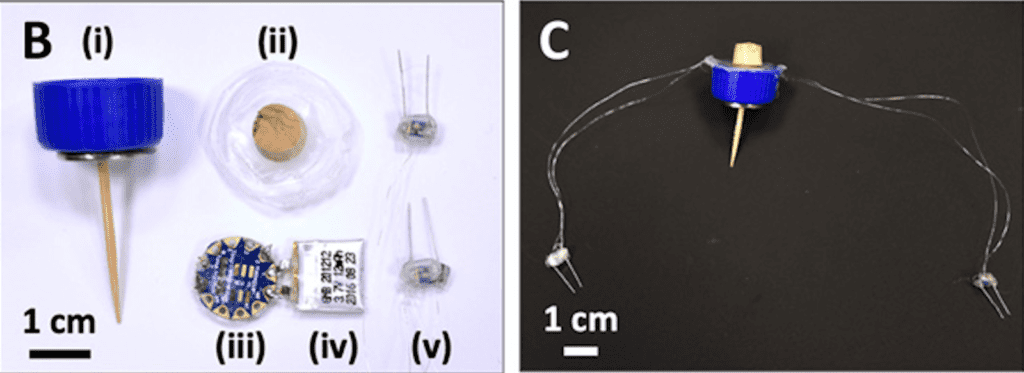Jellyfish never stop. Twenty-four hours a day, seven days a week, they move through the water in search of food such as shrimp and fish larvae. They are more efficient than any other swimmer in the animal kingdom, using less energy for their size than graceful dolphins or cruising sharks. They’re not very fast, though. That had to change, some Stanford researchers thought, who literally strapped a motor on the invertebrates, turning them into fast-moving marine cyborgs.

On average, the jellyfish’s cost of transport — measured by the oxygen they use to move — is 48 percent lower than any other swimming animal. The recent biohybrid made at Stanford, however, blows everything that came before it out of the water. According to the study published in Science Advances, the swimming cyborg is 10 to 1,000 times more energy efficient than other swimming robots.
Researchers sourced moon jellyfish (Aurelia aurita) from the Cabrillo Marine Aquarium in San Pedro, California, and embedded a waterproof propulsion system into their muscle tissue. The system consists of a lithium polymer battery, a microcontroller, a microprocessor, and a set of electrodes. The controller generates an electrical signal that travels through the electrodes into the jelly muscles, causing them to contract.

During experiments, the research team split their jellies into three groups: one swam on their own with no electronic augmentation, acting as the study’s control, one had a controller attached to the jellies that was turned off to see whether the device affected the animals’ motion in any way, and a third had the controller switched on.
Adding the controller with no electrical stimulation seems to have made little effect on the jellyfish. Those that had the controller activated increased their swimming speed nearly three times, from 0.15 to around 0.45 body diameters per second.
“Swimming speed can be enhanced nearly threefold, with only a twofold increase in metabolic expenditure of the animal and 10 mW of external power input to the microelectronics. Thus, this biohybrid robot uses 10 to 1000 times less external power per mass than other aquatic robots reported in literature. This capability can expand the performance envelope of biohybrid robots relative to natural animals for applications such as ocean monitoring,” the Stanford researchers wrote.
In the future, the researchers want to experiment further in order to increase both speed and energy efficiency.
As for the jellyfish’s health, the researchers wrote in their study that moon jellies are invertebrates with no central nervous system so they feel no pain. They note that they had taken precautions to avoid any unnecessary tissue damage to the animals. After the experiments were over, the controllers were removed and the jellies healed on their own.









